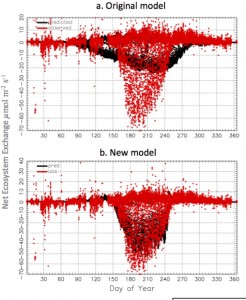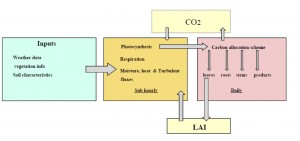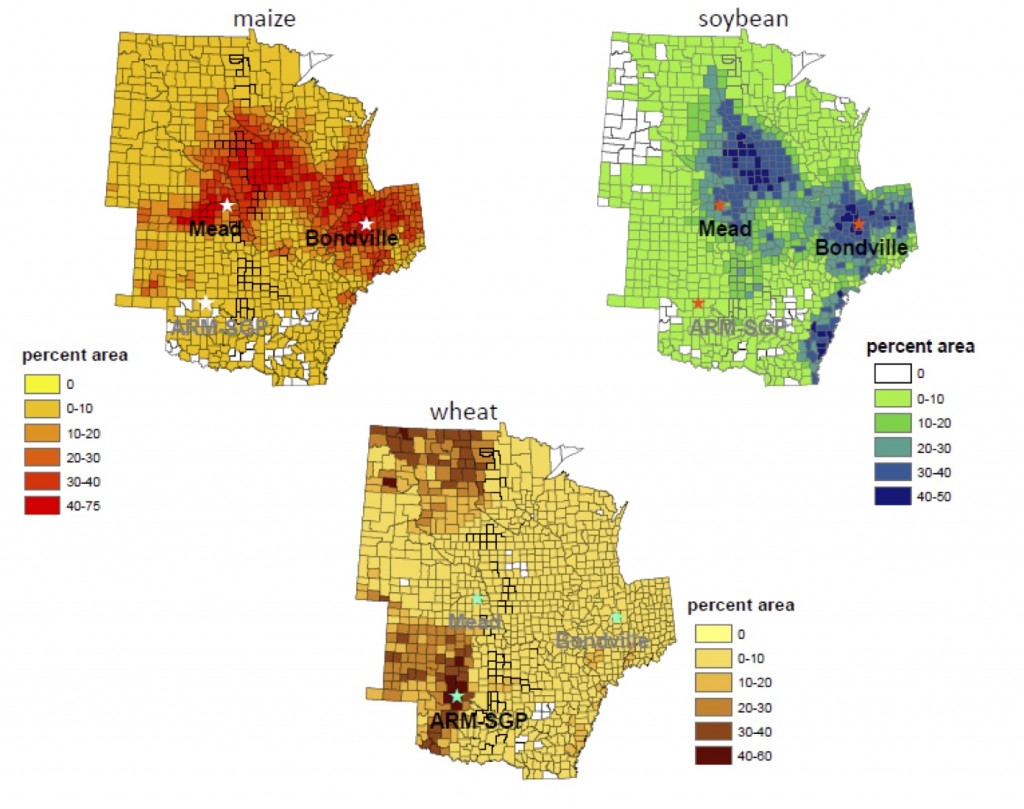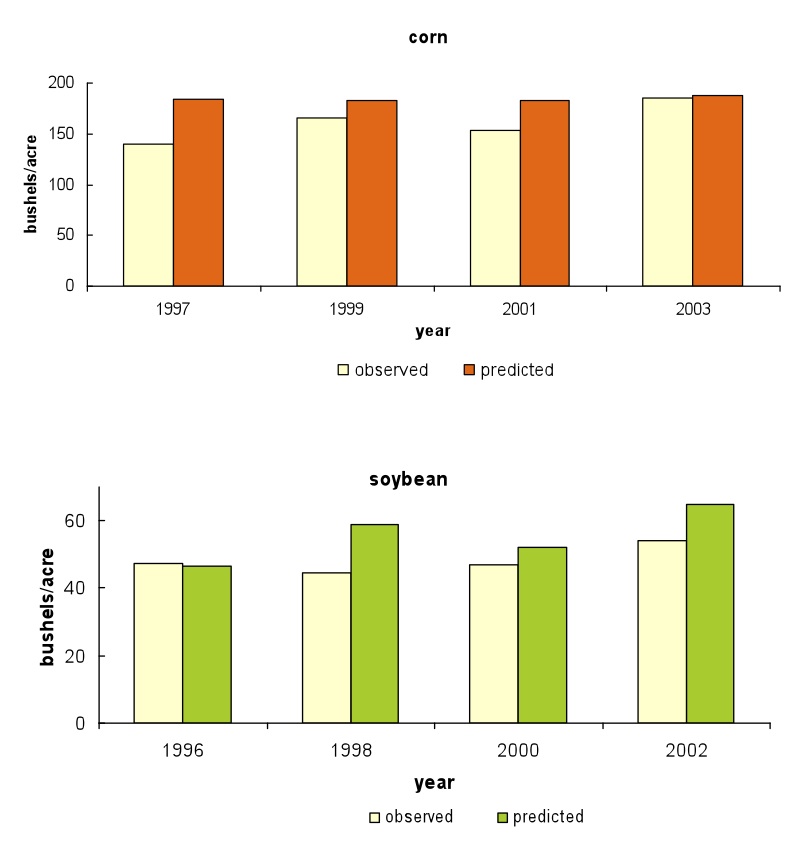DOE NICCR Crops
Land-Atmosphere Exchanges Across the Midcontinental Region of North America: Processes, Scaling, and Evaluation
DOE NICCR 2007 – 2009
Observations of CO2 fluxes by eddy covariance are an important source of process-level information, but flux towers provide only a very sparse sample of the heterogeneous mosaic of natural and managed ecosystems in the mid-continent US. Regional synthesis requires combining eddy covariance data with spatial information on management and soils, remote sensing, and modeling, and evaluation of models by comparing predictions to observed atmospheric CO2 and agricultural yield.
The modeling and analysis project we propose will take place across a five-state region selected for the Mid-Continent Intensive (MCI) experiment of the North American Carbon Program (NACP).
We hypothesize that (1) seasonal variations in carbon flux over crops simulated by a land-surface model (SiB) will be substantially improved by inclusion of crop-specific phenology algorithms developed for crop production models; (2) the modified model will adequately reproduce variations in cropland carbon fluxes at several flux towers over different crops; and (3) when parameterized across the region and coupled to an atmospheric transport model, the system will predict regional agricultural yields and spatial and temporal variations in atmospheric CO2 made during the NACP MCI experiment.
 We propose to develop, implement, and evaluate a numerical modeling system to estimate time-varying exchanges of carbon, water, and energy across the NACP MCI region, using a coupled modeling system (SiB-RAMS) tested against observations at a variety of spatial scales. We will include the physiology and phenology of important agroecosystems in the region. Combining satellite imagery and several survey-based data sources, we will develop 1-km gridded datasets for vegetation cover, soils and management practices in the mid-continent region, and compare our simulations to observed fluxes and inventory measurements made during the NACP Mid-Continent Intensive experiment. After evaluating the improved offline model for specific sites, we will perform very high resolution simulations of Intensive Observing Periods using the fully coupled SiB-RAMS model. These simulations will be evaluated by comparing to airborne transects of eddy covariance measurements, atmospheric trace gas distributions, and cropland carbon inventory measurements made by other investigators involved in the MidContinent Experiment.
We propose to develop, implement, and evaluate a numerical modeling system to estimate time-varying exchanges of carbon, water, and energy across the NACP MCI region, using a coupled modeling system (SiB-RAMS) tested against observations at a variety of spatial scales. We will include the physiology and phenology of important agroecosystems in the region. Combining satellite imagery and several survey-based data sources, we will develop 1-km gridded datasets for vegetation cover, soils and management practices in the mid-continent region, and compare our simulations to observed fluxes and inventory measurements made during the NACP Mid-Continent Intensive experiment. After evaluating the improved offline model for specific sites, we will perform very high resolution simulations of Intensive Observing Periods using the fully coupled SiB-RAMS model. These simulations will be evaluated by comparing to airborne transects of eddy covariance measurements, atmospheric trace gas distributions, and cropland carbon inventory measurements made by other investigators involved in the MidContinent Experiment.
The proposed research is intended to evaluate a primary scaling strategy for the NACP. Deliverables will include regionally-gridded hourly fluxes, evaluation against regional crop production and atmospheric CO2, and a modeling and analysis system, including model code and data, released through the NACP Data and Information System.





